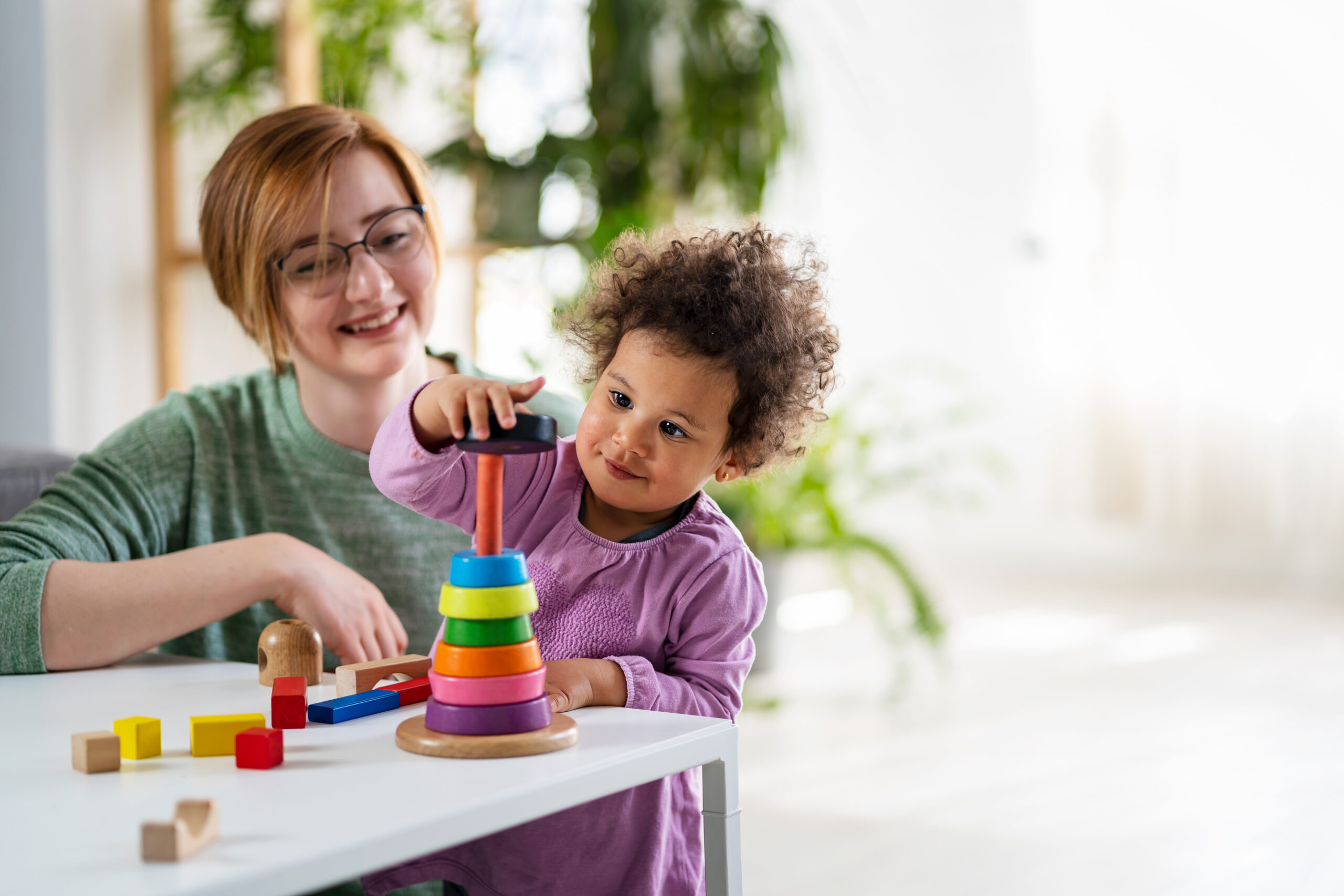
As every parent and teacher knows, children’s behavior varies throughout the day. A child is likely to act in different ways depending on the activity, the time of day, or the children present. Conducting multiple observations is an effective approach to getting to know children and for tracking ongoing progress throughout the year.
While not always possible, it is best if children’s words and actions are captured in a running record during the activity rather than from memory later in the day. Running record observations are written in the moment, capturing factual details about what the child says and does.
Consider this example…
Observation written at the end of a long day: Maria smashed her strawberry into the table at snack time today.
Same observation written in the moment: Maria has four large strawberries in her bowl at snack. She chooses a spoon from the utensil caddy. She tries to scoop a strawberry on her spoon. The strawberry falls off. She tries two more times. Each time the strawberry falls off. The fourth time, she picks up a strawberry with her fingers, smashes it on the table with her fist, and scoops it up with the spoon.
When the observation was captured in the moment, the teacher reflected on all that she has learned about Maria, including her choice-making skills, fine motor skills, persistence, and creativity.
Observations are more effective and useful in planning when they are accurate, objective, and complete…
- Accurate. To capture an accurate picture of a child, consider conducting observations at various times during the day and week, in indoor and outdoor settings, and while individual and group activities are under way. This will provide a more representative sample of the child’s interactions, behavior, learning style, and more.
- Objective. Objective observations record only what a teacher actually sees and hears, without value judgments of any kind. Such observations do not label the child’s behaviors (positively or negatively) or draw conclusions about the child’s words and actions. Being objective creates an unbiased, fact-based view of the child. Avoid words about these topics:
- Feelings: Write “She smiled” instead of “She looked happy.”
- Intelligence: Write “He pointed and said, ‘That’s a robin’” instead of “He is smart.”
- Motivation: Write “She threw a block at him” instead of “She wanted to hurt him.”
- Complete. To capture enough detail to create a complete picture of the child’s behavior, observations should include a beginning, middle, and end whenever possible. Teachers typically observe children long enough to see the events leading up to a behavior, the behavior itself, and then the outcome or consequences of the behavior. Include details such as direct quotes of what the child said.
Becoming an effective observer takes time and practice. Consider having a colleague read your observations to check for accuracy, objectivity, and completeness. It’s a good idea to keep observation materials close at hand so you are ready when an opportunity presents itself. Use whatever observation-recording tools work for you or are required by your program. This may vary from the simple pen and paper, to index cards or self-stick notes, or a voice recorder on your phone! You can also use this Child Observation Form.
Source: Cairone, Karen, and Mary Mackrain. Promoting Resilience in Preschoolers: A Strategy Guide for Early Childhood Professionals. 2nd ed., Kaplan Early Learning Company, 2012.
March 18, 2024


